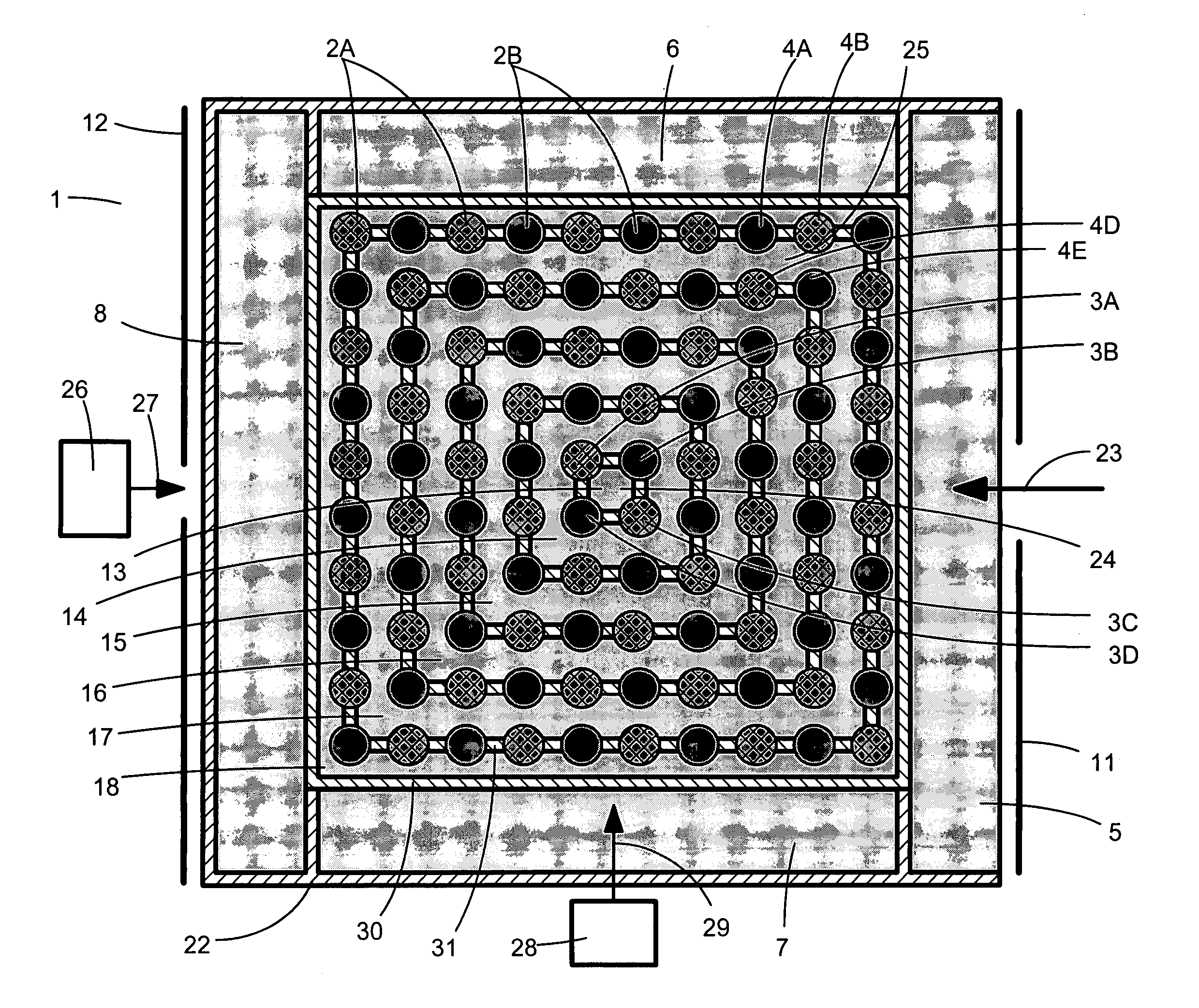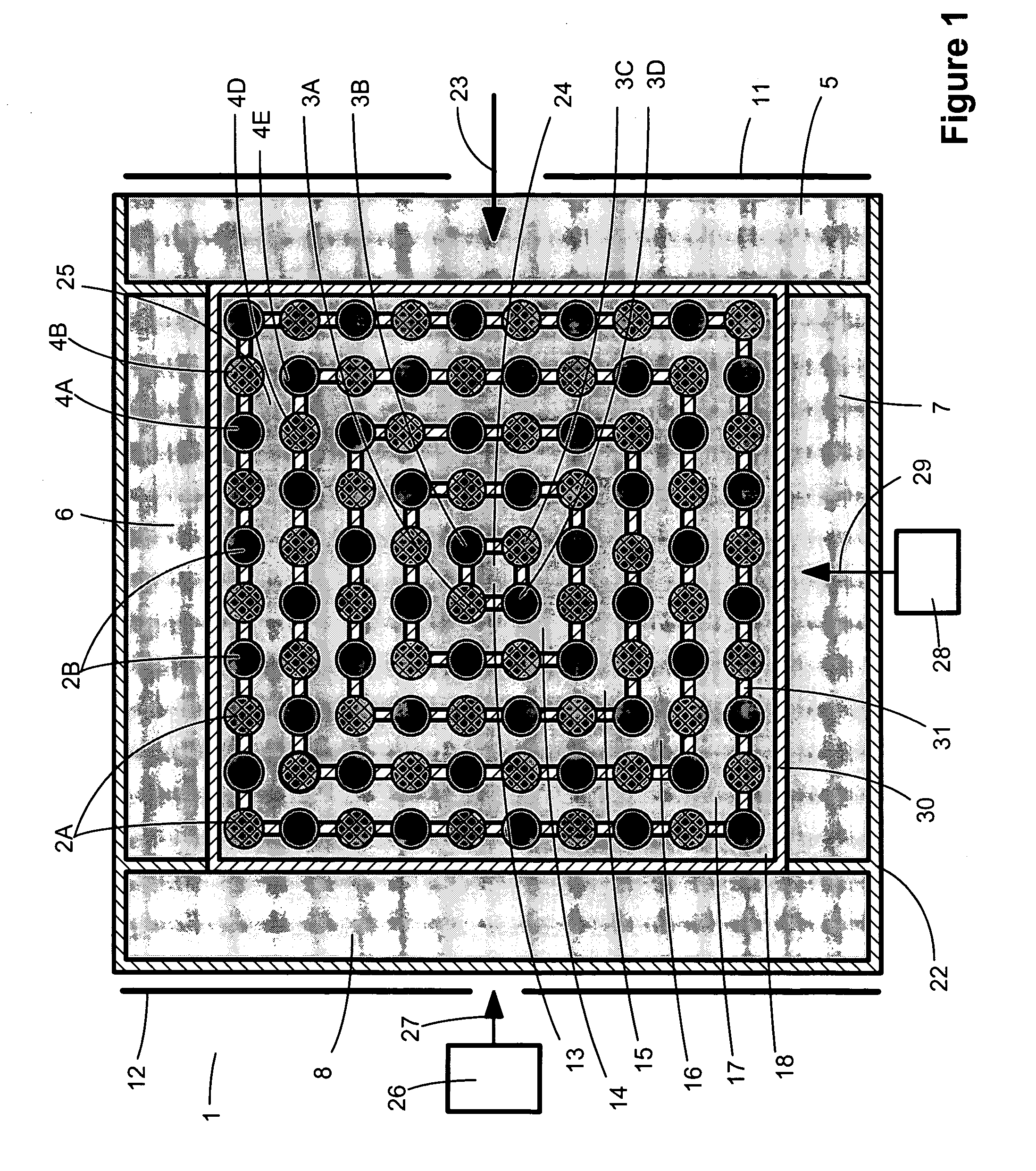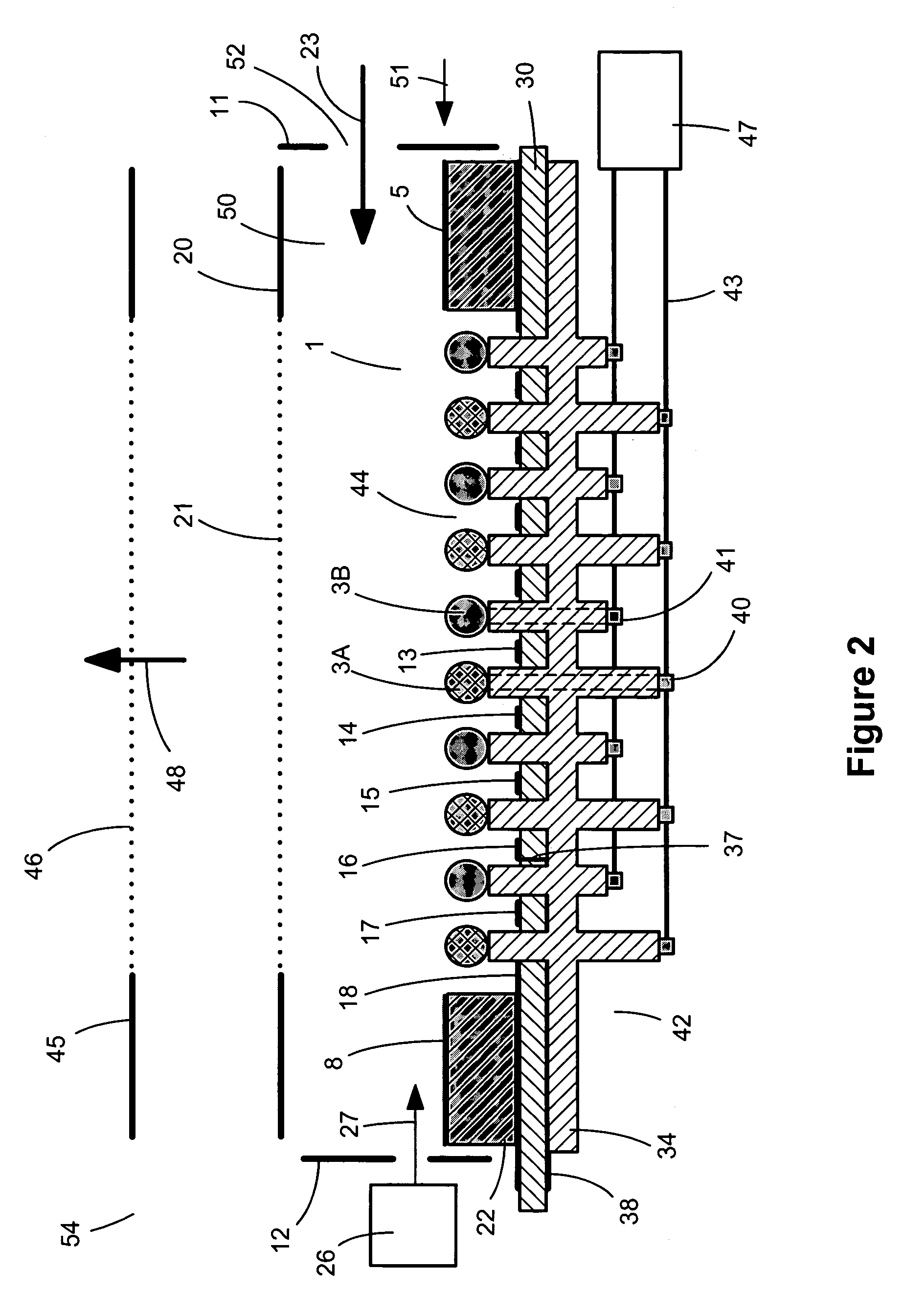RF surfaces and RF ion guides
a technology of ion guides and surfaces, applied in the field of mass spectrometry, can solve the problems of low duty cycle efficiency, relatively low duty cycle, and electrode geometry producing pulsed tof acceleration fields that are generally not optimal, and achieve the effect of short rang
- Summary
- Abstract
- Description
- Claims
- Application Information
AI Technical Summary
Benefits of technology
Problems solved by technology
Method used
Image
Examples
Embodiment Construction
[0064]A series of electrodes spaced in a grid pattern, to which RF of opposite phase and appropriate voltage is applied to adjacent RF electrodes, generates a field that reflects ions away from the surface. In the absence of a retarding field above the surface, ions of appropriate m / z and kinetic energy are reflected. As described by Whitehouse and Welkie in U.S. Pat. No. 6,683,301 B2, incorporated herein by reference, ions can be confined to a volume of space directly above the RF surface when an electrostatic retarding field is maintained above the surface, trapped by the RF pseudo potential wells. In one aspect of the present invention, the shape and size of the electrode tips, and the spacing between them, are adjusted such that an ion population is confined to localized volumes of space above gaps between the electrodes during ion trapping operation. Multiple Electrostatic electrodes configured behind and to the sides the RF surface, in the present invention, improve trapping e...
PUM
 Login to View More
Login to View More Abstract
Description
Claims
Application Information
 Login to View More
Login to View More - R&D
- Intellectual Property
- Life Sciences
- Materials
- Tech Scout
- Unparalleled Data Quality
- Higher Quality Content
- 60% Fewer Hallucinations
Browse by: Latest US Patents, China's latest patents, Technical Efficacy Thesaurus, Application Domain, Technology Topic, Popular Technical Reports.
© 2025 PatSnap. All rights reserved.Legal|Privacy policy|Modern Slavery Act Transparency Statement|Sitemap|About US| Contact US: help@patsnap.com



